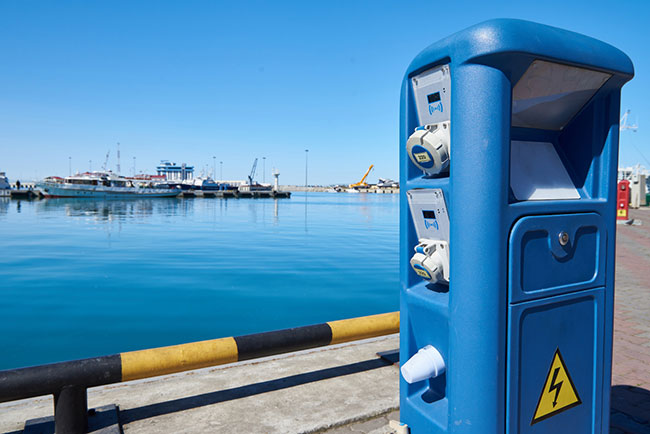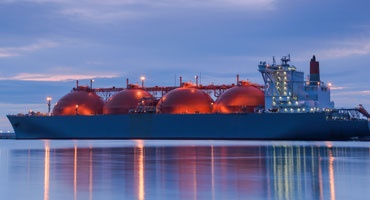What is shore power and why is it important?
As more and more companies and industries aim to become more environmentally friendly, changes need to be made to long-standing conventions. One of the most radical changes is the shift to shore power as an alternative to engines for ships, RVs and heavy-duty vehicles when docked or idled. Shore power has the capability to drastically reduce emissions in these cases while still providing the required amount of power for the vehicle. Read on to learn more about shore power and its advantages, as well as real-world applications that have already been put in place.
What is shore power?
As previously mentioned, shore power is an alternative way of providing power for the essential functions of a ship, RV or other heavy-duty vehicle without needing to run the vehicle's engine. Shore power is only necessary for situations where the vehicle is idling/at berth and would be able to connect to a stationary power source. This power source is often referred to as a “power pedestal”, and provides AC electricity to the vehicle. For RVs and other small to mid-size vehicles this is either a 30 amp or 50 amp system, but connections for large yachts utilize 100 amps.

The largest push for the adoption of shore power has come from the state of California, where regulations have been passed limiting the use of auxiliary engines for at-berth ships in an effort to reduce emissions. Sacramento Municipal Utility District (SMUD) has also undertaken an initiative to “electrify” truck stops with shore power connections so truckers don’t need to leave their engine idling when parked at a rest stop. Shore power can also be used to charge auxiliary batteries in the truck, freeing up pedestals for other truckers once those batteries are charged and reducing congestion at the rest stop.
Benefits of shore power
Shore power provides a wide range of benefits, not only for end users but for the environment and the vehicles themselves. The most well known of these benefits is the reduction of emissions being released into the environment. Cruise ships, for example, can reduce diesel emissions by 80% and CO2 emissions by 66% with shore power, according to data collected by the Port of Seattle. With over 300 cruise ships currently being used worldwide, this reduction is a significant environmental aspect to be considered. When also accounting for RV and trailer truck shore power, this is an even more impactful figure.
Another benefit of reduced emissions is the improved health of port workers and citizens living near these ports. Less emissions in the air means less risk of cardiovascular and respiratory issues and cancer in anyone exposed to said emissions. In the case of Brooklyn Cruise Terminal, this has an expected monetized health benefit of $9 million per year, providing a monetary incentive on top of the healthcare incentive.
Engine wear and tear is another area where shore power can be beneficial. Since shore power eliminates the need to idle an engine, any time spent connected to shore power presents a reduction in wear and tear on the engine. Being one of the most expensive systems to repair/replace in a vehicle, protecting the engine from as much wear as possible is a vital task, and on its own is a compelling reason to make the shift to shore power.
Unique applications of shore power
 Some of the most innovative applications of shore power are in the marine shore power industry, where there’s a wider range of needs for shore power. One such application is for a floating storage unit (FSU) for an offshore LNG terminal in Bahrain. The system — the first of its kind in the world — required an emergency shutdown for cases where the movement of the FSU or extreme conditions such as a tsunami pose a risk of cable disconnection. This eliminates the risk of an emerging arc in these cases, vastly increasing the safety and reliability of the system.
Some of the most innovative applications of shore power are in the marine shore power industry, where there’s a wider range of needs for shore power. One such application is for a floating storage unit (FSU) for an offshore LNG terminal in Bahrain. The system — the first of its kind in the world — required an emergency shutdown for cases where the movement of the FSU or extreme conditions such as a tsunami pose a risk of cable disconnection. This eliminates the risk of an emerging arc in these cases, vastly increasing the safety and reliability of the system.
Another shore power application that has innovated the way shore power is implemented is the igus® mobile shore power outlet (iMSPO). This outlet is capable of moving along the entire length of a berth (with a maximum length restriction of 400 meters). This mobile solution eliminates the need to line a ship up with the shore power outlet, making connection quicker and easier. igus’® chainflex® cables and e-chain® cable carriers make the system possible, and ensure a long service life.
Conclusion
Switching to shore power is not only an economically-sound decision, but one that benefits both the environment and the health of those working or living near large vehicles that are frequently idling. While still in its early stages, with the push from various states and countries to adopt shore power, it’s only a matter of time before it becomes the standard for all types of large, heavy-duty vehicles.
For more information about shore power in marine applications, visit our website. You can also contact our orange services expert for questions about a specific application or for assistance with installation, inspection and training.



